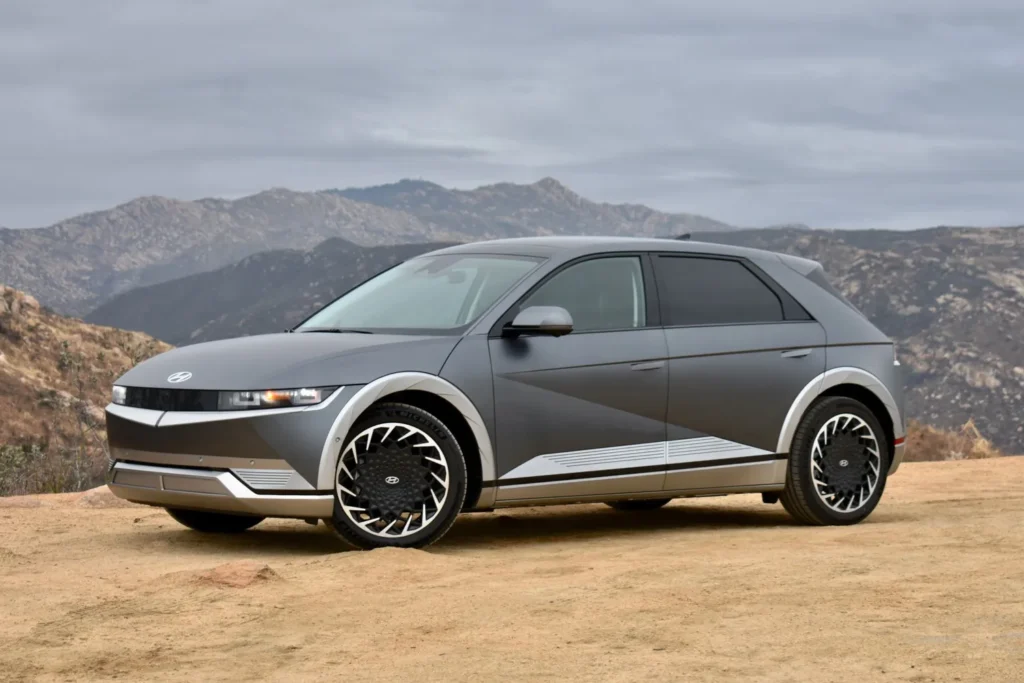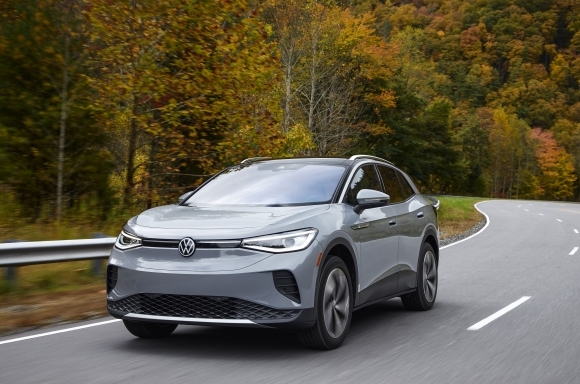Your Cabin Might Be Warm — But at What Cost?
In an EV, there’s no engine heat to warm the cabin. No radiator to draw from. Just electricity. And how your car uses that electricity to heat you up in the winter? That makes a bigger difference than most drivers realize.
Some EVs can keep the cabin toasty while barely touching your range. Others burn through battery life just to defrost your windshield. And if you live in a cold state, the type of heating system your used EV has isn’t just a comfort issue — it’s a range and drivability issue.
In 2025, the difference between a heat pump and a resistive heater in a used EV could mean an extra 30–40 miles of winter range — or none at all.
This blog breaks it all down: how the systems work, how they perform, which cars use what, and how that impacts real-world winter driving — especially after 50,000+ miles.
What’s the Difference? Heat Pump vs. Resistive Heating
Let’s keep it simple.
Resistive Heaters
These work like space heaters. They run electric current through a heating element, which creates warmth. The air is blown across it into the cabin.
Pros: Simple, cheap, fast to heat up
Cons: Very inefficient. Can use 5–7 kW continuously. Huge range loss in winter. Slower defrosting if the battery is cold.
Heat Pumps
Heat pumps are more efficient. Instead of generating heat, they move it — extracting warmth from the outside air (even when cold) and compressing it into the cabin.
Pros: 2–3x more efficient than resistive heat. Lower power draw. Better range in winter. More even cabin temperature.
Cons: Complex. Costlier. Can struggle in extreme cold (<10°F). Not available on all trims or models.
Now here’s the real-world difference. A resistive heater might cut your range by 30–40 miles on a 70 kWh battery pack. A heat pump? Maybe 10–15 miles, and you’ll stay warmer doing it.
Why This Matters More in Used EVs
When you’re shopping used, you don’t get to spec the car yourself. The heat pump might only be on higher trims. Or it might’ve been added mid-cycle. That makes knowing what to look for even more important.
Plus, heating systems degrade over time:
- Blowers get weaker
- Thermostats get inaccurate
- Seals shrink
- Compressors wear (in heat pumps)
- Cabin heating gets slower or inconsistent
Used EVs with well-maintained heat pumps still perform strong at 70,000+ miles. But resistive systems? They never get more efficient — and range only gets worse as the battery ages.
So let’s break down which EVs use what, and how they perform when the snow hits.
Tesla Model Y and Model 3 (2021–2023)
What it uses:
- Pre-2020: Resistive heating only
- 2021+: Tesla’s custom-built Octovalve heat pump system
How it performs:
Tesla’s heat pump design is one of the best. It uses a centralized thermal controller that manages the battery, cabin, and drivetrain together. That means faster warm-up, reduced energy use, and smarter defrosting.
At 25°F, the heat pump draws about 1.5–2.5 kW, versus 5+ kW on earlier resistive-only models.
Winter range impact:
- Heat pump: ~15–20% drop
- Resistive: ~25–30% drop
- Charging and preconditioning are also more efficient on heat pump models
What to check when buying used:
Make sure you’re getting a 2021+ model for heat pump. Earlier builds (especially 2018–2019) still drive great — but hit harder in cold.
Hyundai Ioniq 5 and Kia EV6 (2022–2023)
What it uses:
- AWD trims: Heat pump standard
- RWD trims: No heat pump
How it performs:
Heat pump models manage to keep cabin warmth and battery preconditioning balanced — even down to about 10°F. Hyundai’s system is efficient but relies on navigation-based preconditioning, which many owners miss.
If properly warmed, energy draw is 2–3 kW max. Without a heat pump? It spikes closer to 6 kW on cabin heat alone.
Winter range impact:
- Heat pump: ~18% loss at 20°F
- Resistive: ~30% or more, depending on heater use
What to check when buying used:
Get the AWD trim if you live in a cold climate. It’s not just for traction — it’s for the heat pump. Big difference in comfort, range, and charging time when cold.
Ford Mustang Mach-E (2021–2023)
What it uses:
- All trims: Resistive heater
- No heat pump available
How it performs:
Ford’s resistive heater works well enough. It warms the cabin quickly and defrosts efficiently — but at a cost. Drivers regularly see 25–35% range drops in cold temps with heater on.
Software updates helped throttle heating demands over time, but power draw remains high. No preconditioning = very slow DC charging until warm.
Winter range impact:
~25–35% depending on drive time and heater use
What to check when buying used:
You’re getting resistive heat no matter the trim. Just expect it, and plan to charge at home to offset the power drain in cold months.
Rivian R1S and R1T (2022–2023)
What it uses:
- All trims: Heat pump standard
How it performs:
Rivian’s system warms the cabin quickly, even at 10°F. The compressor cycles intelligently based on drive mode, speed, and temperature. Heat retention is excellent, and interior defrost is fast.
The power draw is around 2–3 kW once stable, even in below-freezing temps.
Winter range impact:
~15–20% if driven warm
Up to 25% if pack is stone cold at startup
What to check when buying used:
Ensure software updates are applied for better thermal regulation. And always pre-warm via the app before driving — it makes a huge difference in charging and comfort.
BMW iX and i4 (2022–2023)
What it uses:
- All trims: High-efficiency heat pump standard
How it performs:
BMW’s heat pump system is one of the most efficient in the industry. Quiet. Fast. Predictable. Real-world usage in Minnesota and northern Canada shows stable cabin temps and excellent range retention even at 0°F.
Power draw is around 1.8–2.2 kW once stabilized. Warm-up from cold takes under five minutes.
Winter range impact:
~10–15%
Charging remains steady thanks to BMW’s nav-based preconditioning
What to check when buying used:
Make sure the iDrive software is current — it affects thermal control and route-based pre-warming.
Volkswagen ID.4 AWD (2022+)
What it uses:
- AWD trims: Heat pump standard
- RWD trims: No heat pump
How it performs:
Heat pump system is functional, not flashy. Keeps range losses under control, but slower cabin warm-up than Rivian or BMW. Still better than resistive-only systems.
Used AWD models with heat pump lose 20–22% range at 20°F. Without heat pump, that jumps to 30% or more — and defrost time doubles.
Winter range impact:
- Heat pump: ~20%
- Resistive: ~30%
What to check when buying used:
Get the AWD Pro S trim or higher for heat pump. Verify build sheet if buying private party — some early builds had it removed due to chip shortages.
Chevy Bolt EV / EUV (2022–2023)
What it uses:
- All trims: Resistive heat only
How it performs:
Cabin heat is strong, but energy use is high. Expect 4–6 kW draw when running heater full-blast. That eats range fast in subfreezing temps.
No battery preconditioning = slow winter charging. No AWD = limited traction unless equipped with good snow tires.
Winter range impact:
~25–30% with heater use
~35% if driving short distances and reheating often
What to check when buying used:
Accept that you’ll lose range in the cold and charge slower. If you’re okay with that, the Bolt is still reliable and simple.
Nissan Leaf (any year)
What it uses:
- All trims: Resistive heating only
How it performs:
Terribly in winter. No battery thermal management. Cabin heat is weak in early models. Huge power draw with minimal effect. DC fast charging in winter is nearly unusable.
Winter range impact:
~35–40%
Even more in extreme cold or snow
What to check when buying used:
Honestly? Avoid the Leaf if you live in a cold climate. It’s just not designed for it.
What We Think
Heat pumps aren’t just nice to have in 2025 — they’re essential if you want to make the most of your EV in a cold climate.
They don’t just save range. They make your car livable. They defrost faster. They charge faster. They make winter driving smoother and smarter.
The best used EVs with heat pumps:
Tesla Model Y and 3 (2021+) — smart thermal integration
Hyundai Ioniq 5 / Kia EV6 AWD — efficient, quick, affordable
BMW iX / i4 — luxury-level performance with rock-solid efficiency
Rivian R1S / R1T — real-world snow crushers
VW ID.4 AWD — budget-friendly, winter-capable
Cars that suffer without heat pumps:
Ford Mach-E — great EV, but winter power draw is high
Chevy Bolt — dependable, but needs warm garages and home charging
Nissan Leaf — no. Just no.
If you drive where winter matters, buy your next EV like a northern driver. Look for the heat pump. Look for preconditioning. Look for a car built to stay warm — without burning range just to survive.








